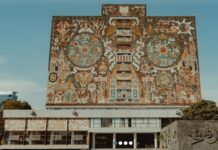Let's go back to 1985, when the Ministry of Education developed two projects named as Mercury for the audiovisual area and Atenea for matters related to computing, which would be in charge of providing induction on new technologies in educational institutions.
Then in 1989 the Program of New Technologies of information and communication known by its acronym PNTIC, who would be the entity in charge of carrying out the aforementioned Mercury and Athena projects. These projects motivated the creation of others with similar characteristics, by the Autonomous Communities with powers in educational matters.
Article Content
Main reason for the creation of the PNTIC
- Progressive introduction of New Information and Communication Technologies.
- Provide support for the creation, development and evaluation of computer and communications technology applications.
- Advise and provide support to the Agencies of the Ministry of Education and Science on this matter.
- Be the entity in charge of deciding and defining the technical characteristics of the computer programs and equipment provided to educational centers, adjusted to technological evolution.
- Encourage collaboration with Institutions and Organizations, both private and public, as well as industrial and service centers for the development of new learning environments, creation of educational programs, as well as design of new computing devices.
- Responsible for defining implementation lines for the Mercury and Atenea Projects.
- Coordinate and advise on the role of Ministry of Education and Science inside and outside the country in relation to NICT and Primary and Secondary education.

Technology available for this project
At the time, the technology that was available and that had greater acceptance had to do with the IBM computer and the MSDOS operating system, then a great advance occurred with the introduction of the Microsoft Windows system, as well as the introduction of the mouse to use the computer.
On the other hand, in 1991, the Ministry of Education, specifically the PNTIC, developed the Mentor Project, which is an initiative that offered adults to integrate into this experience and give them the opportunity to develop both personally and professionally. This project used the Ibertext network, which consisted of an interface with the same characteristics as the videotext used by television. This became one of the pioneers in tele-education through communication systems worldwide. This project, which continues to be developed today after 29 years without interruption, began in 10 locations in Castilla-Leon, through a physical infrastructure called Mentor Classrooms located in addition to Spain, in other Latin American countries and whose training is carried out entirely through the internet.
Introduction of the internet in the educational field
In the period from 1996 to 2000, the transfer of educational powers to the Autonomous Communities was carried out. In 1996, educational centers began to connect to the Internet, first through the national Infovìa network, then they did so by connecting to modems that had a speed of 56 kbps. In that same year, 1996, the Ministry of Education provided teachers and educational centers with internet, web and email connections. By now, resistance to change and fear of new knowledge is beginning to be overcome and the economic impact of technology is beginning to be seen as an investment and not as an expense. At this point, technology has infected everyone and becomes a massive process.
In 1997 the Ministry of Education incorporates rural centers into this idea, with the Digital Village Project. Which I provide to the schools of Autonomous Communities under the responsibility of the Ministry of Education, internet, modems, and communication lines. Incorporating into this project a population of 2.500 locations, 70.000 students and 7.000 teachers.
In addition to the Digital Village Project, the tele-education project for students in hospital classrooms was also developed. As well as, the modernization of school libraries with the Abies software, which has been developed into the current Abiesweb.
Creation of the CNICE
The National Center for Educational Information and Communication was created in 2000, incorporating the Program for New Information and Communication Technologies (PNTIC) and the Center for Innovation and Development of Distance Education (CIDEAD). The purpose of which is to apply new information and communication technologies to education. Likewise, the creation of said institute has the responsibility of developing new technologies to adapt them to tele-education and advance in distance education.
In 2008, the CNICE became the Higher Institute of Training and Network Resources for Teachers (ISFRRP), with the function of incorporating the information society in education and creating new forms of tele-education. As well as developing and communicating curricular materials and materials to support research in the area of teaching and updating teachers.
In 2009, the ISFRRP was replaced by the Institute of Educational Technologies (ITE) with the aim of making digital and audiovisual material the daily work tools of teachers in the classrooms. As well as the maintenance of the Department's educational resources portal and the incorporation of social networks for the exchange of resources and experiences of teachers.
Beginning of digital culture in Spain
The arrival of the technology The way we do things, like shopping and communicating daily, has changed our lives. Since 2008, a commercial fiber optic internet connection has been available in Spain, which has led to an increase in the use of the internet as a resource for learning in classrooms. Throughout all these years, Internet access in classrooms was encouraged, providing students and teachers with the necessary technological equipment, as well as the creation of online platforms and material for teaching. The School 2.0 project, which had the intention of integrating the ICT in educational centers in Spain, through the provision of infrastructure and internet connection. And even though the result has not been an increase in educational quality, digitalization in educational centers has provided inclusive and flexible learning, giving priority to the individual in learning, respecting each person's own pace. In this sense, teachers believe that students are more interested and motivated if ICT is used in the classroom. Likewise, students think that using technology makes it easier for them to learn new knowledge.

Expert in SEO/SEM and communication on social networks.
CEO at tecnologia.net and passionate about everything related to technological progress






